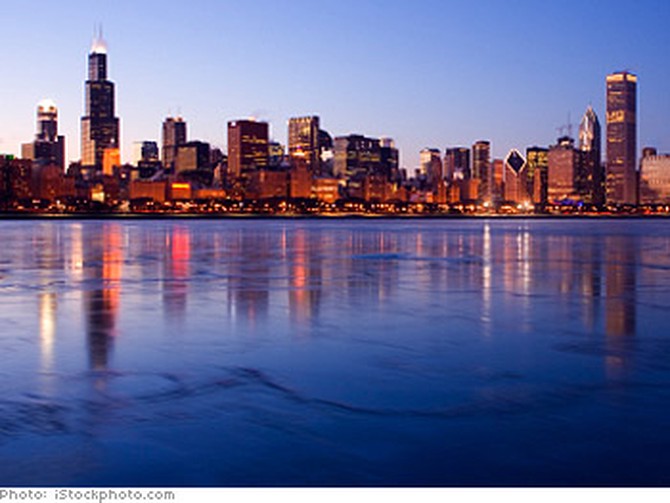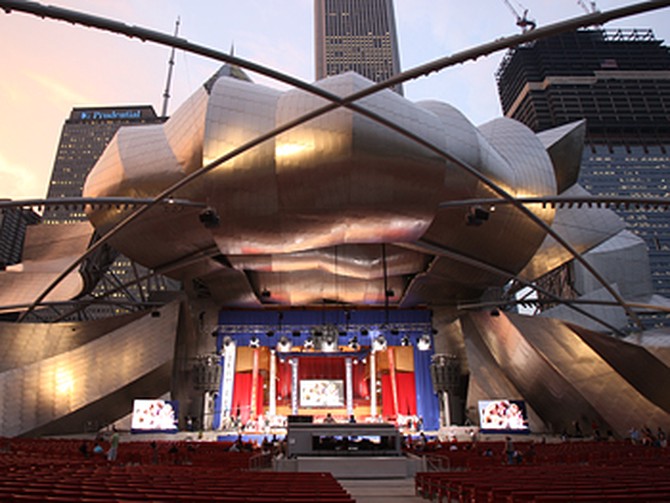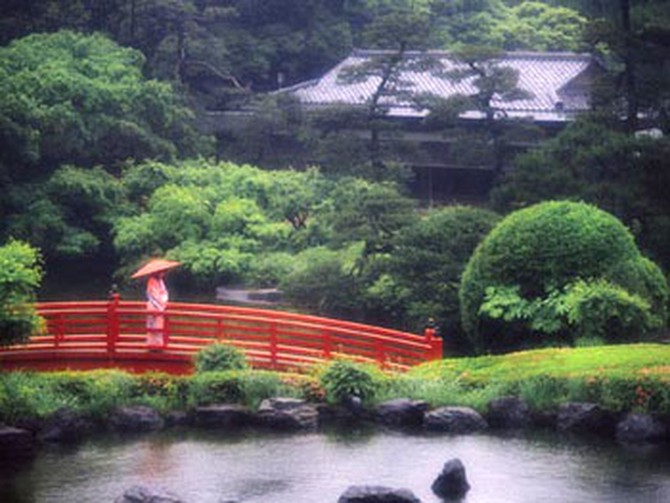Travel to the 2016 Olympic Bid Cities
Even though the International Olympic Committee chose Rio de Janeiro to host the 2016 Olympics, all the cities that were vying for the honor are worth a visit. CBS travel editor Peter Greenberg offers his guide to travel in each world-class city.
By Peter Greenberg

Photo: © 2009 Jupiterimages Corporation
Rio de Janeiro
Rio de Janeiro has a lot more to offer than just Carnival and Copacabana. This is a vibrant yet gritty city where there's always something happening.
If you want to act like a local, do as the locals do and see a soccer match (just remember to call it "football"). Estadio do Maracanã is one of the biggest soccer stadiums in the world, so unless you have a problem with crowds, going to a game is a must.
One of the can't-miss tourist attractions is a large lagoon, Lagoa, in the middle of the city. It's a great place to walk or ride a bicycle, or just sit back and watch paddle-boaters and take in the view of the iconic Christ the Redeemer statue and Ipanema beach while sipping on fresh coconut juice.
If you want to act like a local, do as the locals do and see a soccer match (just remember to call it "football"). Estadio do Maracanã is one of the biggest soccer stadiums in the world, so unless you have a problem with crowds, going to a game is a must.
One of the can't-miss tourist attractions is a large lagoon, Lagoa, in the middle of the city. It's a great place to walk or ride a bicycle, or just sit back and watch paddle-boaters and take in the view of the iconic Christ the Redeemer statue and Ipanema beach while sipping on fresh coconut juice.

Photo: © 2009 Jupiterimages Corporation
While most people only associate Rio with Copacabana and Ipanema beaches, the city actually boasts 23 beaches on the south side that are frequented by locals and visitors alike. Check out Praia do Pepino, where you can watch hang gliders and paragliders on windy days.
Getting around Rio can is something of a circus. The city has a solid public transportation network of buses and a limited subway, and many neighborhoods are very walkable. But the city is known for its crime for a reason, and many of the less favorable neighborhoods are pushed up against the safer ones, so it pays to be cautious, carry a map and take taxis if you're unfamiliar with the area or traveling around at night.
Peter says there's more than Carnival to Rio's charms.
Getting around Rio can is something of a circus. The city has a solid public transportation network of buses and a limited subway, and many neighborhoods are very walkable. But the city is known for its crime for a reason, and many of the less favorable neighborhoods are pushed up against the safer ones, so it pays to be cautious, carry a map and take taxis if you're unfamiliar with the area or traveling around at night.
Peter says there's more than Carnival to Rio's charms.

Photo: © 2009 Jupiterimages Corporation
Madrid
People don't necessarily think of Madrid as a major cultural destination, but there are some great national gems in Spain's capital city. Along the "Avenue of Art" is the Museo del Prado, which holds one of the most impressive collections of European art in the world, the Museo Reina Sofia museum featuring contemporary works and the complimentary Museo Thyssen-Bornemisza, which holds an eclectic mix not found in the other two.

Photo: © 2009 Jupiterimages Corporation
Although Madrid is more considered a financial capital than a fashion city, there is excellent shopping to be found here, and visitors can find great deals during the sale season, known locally as rebajas. From January to February and again from July to August, almost all of Madrid's stores offer 30 to 50 percent discounts!
Getting around Madrid is easy enough on the Metro, but remember that Spain is a country of night owls and yet the train generally stops running at 1:30 a.m., at which point your other options are a bus or taxi. Translation? In the transportation area, it's questionable whether Madrid is able to handle Olympic-size crowds.
Busy days, busier nights—get Peter's tips to enjoy Madrid like a local.
Getting around Madrid is easy enough on the Metro, but remember that Spain is a country of night owls and yet the train generally stops running at 1:30 a.m., at which point your other options are a bus or taxi. Translation? In the transportation area, it's questionable whether Madrid is able to handle Olympic-size crowds.
Busy days, busier nights—get Peter's tips to enjoy Madrid like a local.

Chicago
The common joke is that Chicago only gets to enjoy two seasons: winter and construction. And if the Second City wins the bid for the Summer Games, those construction projects are about to skyrocket!
But in my book, Chicago is America's most underrated major city. Part of what makes it such a great destination is that it's found a great balance between being laid-back and friendly, and cosmopolitan and cultural. Among the required activities are a visit to the fantastic Shedd Aquarium (which features—get this—a soy-based roof), kayaking on Lake Michigan when the weather is right and a night of comedy at Second City.
But in my book, Chicago is America's most underrated major city. Part of what makes it such a great destination is that it's found a great balance between being laid-back and friendly, and cosmopolitan and cultural. Among the required activities are a visit to the fantastic Shedd Aquarium (which features—get this—a soy-based roof), kayaking on Lake Michigan when the weather is right and a night of comedy at Second City.

Chicago is also quite a foodie city, and no visitor should miss out on the city's famous deep-dish pie from Gino's East or a perfect Polish sausage from Hot Doug's. But there's definitely plenty of high-end cuisine to be experienced here, including Rick Bayless' upscale Mexican joints, Frontera Grill and Topolobampo.
The city is easily navigable by public transportation and on foot, which is key for an Olympic city—meaning Chicago is one step ahead of some other bid cities to handle the crowds. One very cool feature is the free Greeter Tours, in which locals show visitors around—whether specific off-the-beaten path neighborhoods, ethnic foodie tours or public art walks—without ever stepping foot in a car.
Read Peter's guide to eco-friendly travel in the Second City.
The city is easily navigable by public transportation and on foot, which is key for an Olympic city—meaning Chicago is one step ahead of some other bid cities to handle the crowds. One very cool feature is the free Greeter Tours, in which locals show visitors around—whether specific off-the-beaten path neighborhoods, ethnic foodie tours or public art walks—without ever stepping foot in a car.
Read Peter's guide to eco-friendly travel in the Second City.

Photo: © 2009 Jupiterimages Corporation
Tokyo
This ultramodern metropolis is one of the most exciting cities on the planet—something is always happening in Tokyo.
Seasoned travelers know that a trip to the Tsukiji Central Fish Market is an absolute must to experience traditional Japanese culture—the only downside is that this wholesale auction is best at 5 a.m., so be prepared!
Another rather touristy but necessary stop is Tokyo Tower, but the trick is to go just before dusk. That way you're granted two spectacular views: the Tokyo skyline at sunset and then the sparkling city at night.
Seasoned travelers know that a trip to the Tsukiji Central Fish Market is an absolute must to experience traditional Japanese culture—the only downside is that this wholesale auction is best at 5 a.m., so be prepared!
Another rather touristy but necessary stop is Tokyo Tower, but the trick is to go just before dusk. That way you're granted two spectacular views: the Tokyo skyline at sunset and then the sparkling city at night.

Photo: © 2009 Jupiterimages Corporation
Here's a tip for Tokyo dining on the cheap (besides the many Ramen shops): Go out and buy a little containers of toothpicks and go to the food displays at Mitsukoshi or Daimaru department stores. The amount of free food samples there is astounding!
Tokyo is definitely a walking city, and its train system is second to none—there's practically no such thing as a late train in this city. If you're planning to travel to other parts of Japan, definitely consider picking up a Japan Rail Pass. The pass, which is sold in 7-, 14- and 21-day increments, is valid on most trains, including the speedy bullet trains, buses and ferries (there are some restrictions). Then I suggest getting out of Tokyo and into Kyoto, and, if there's time, to Kobe and to the memorial at Nagasaki.
Get out of the tourist traps with Peter's off-the-beaten-path guide to Tokyo.
Tokyo is definitely a walking city, and its train system is second to none—there's practically no such thing as a late train in this city. If you're planning to travel to other parts of Japan, definitely consider picking up a Japan Rail Pass. The pass, which is sold in 7-, 14- and 21-day increments, is valid on most trains, including the speedy bullet trains, buses and ferries (there are some restrictions). Then I suggest getting out of Tokyo and into Kyoto, and, if there's time, to Kobe and to the memorial at Nagasaki.
Get out of the tourist traps with Peter's off-the-beaten-path guide to Tokyo.
Published 09/29/2009

